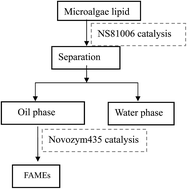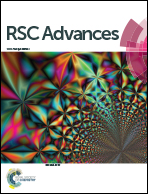A robust process for lipase-mediated biodiesel production from microalgae lipid
Abstract
Microalgae lipid has been considered a good feedstock for biodiesel production because of its well-recognized advantages. To promote microalgae as a feedstock for biodiesel production, developing an appropriate method to convert the lipid into biodiesel is significant. A novel process with the combination of free lipase and immobilized lipase used for the conversion of microalgae lipid for biodiesel production is proposed in this paper. The combination of the two lipases was demonstrated to be effective in converting free fatty acids into biodiesel (FAME). The effect of different factors influencing immobilized lipase-catalyzed methanolysis was investigated systematically. It was demonstrated that the strategy of adding methanol, molecular sieve dosage, lipase dosage and temperature had significant influence on the FAME yield. Under the optimized conditions (10% 3 Å molecular sieve dosage (w/w), molar ratio of methanol to lipid 5 : 1, lipase dosage 5% (w/w), temperature 45 °C and agitation rate 300 rpm), a biodiesel yield of 97% could be obtained. Further, a 5-level-4-factor central composite design was employed to optimize immobilized lipase-mediated alcoholysis and the relationships between the variables and their co-influence on biodiesel yield were further analyzed systematically.


 Please wait while we load your content...
Please wait while we load your content...